Latest Blogs
Common Monsoon Illnesses and How to Prevent Them
Introduction The monsoon season brings much-needed relief from the summer heat, but it also brings its own set of health challenges. Increased humidity and stagnant water provide a perfect breeding ground for various pathogens, leading to an increase in monsoon diseases. In order to maintain good health at this time, it is important to understand these rainy season diseases and know how to prevent them for maintaining good health during this time. List Of Monsoon Diseases Dengue Dengue is a viral disease transmitted by the Aedes mosquito, which breeds in stagnant water. Dengue symptoms include high fever, severe headache, pain behind the eyes, joint and muscle pain, rash, and bleeding. Chikungunya Chikungunya is another viral disease transmitted by mosquitoes, which is characterized by high fever, severe joint pain, muscle pain, headache, fatigue and rash. The joint pain can be debilitating and last for weeks. Malaria Malaria is caused by the parasite Plasmodium, which is transmitted through the bite of an infected Anopheles mosquito. Symptoms include high fever, chills, sweating, headache, nausea and vomiting. Typhoid Typhoid is a bacterial infection spread through contaminated food and water. It is characterized by prolonged fever, weakness, abdominal pain, headache and loss of appetite. In severe cases, intestinal bleeding may occur. Viral Fever Viral fever is a common term for infections caused by various viruses. Symptoms include high fever, body aches, muscle aches, headache, fatigue, and sometimes a rash. These infections are typically self-limiting but can be uncomfortable. Influenza Influenza or Flu is a highly contagious respiratory disease caused by the influenza virus. Symptoms include fever, chills, cough, sore throat, runny or stuffy nose, body aches, headache, fatigue, sometimes vomiting and diarrhea. Cholera Cholera is a severe diarrhoeal infection caused by bacterium Vibrio cholerae. It is spread through contaminated water and food and causes severe dehydration, which can be fatal if not treated immediately. Jaundice Jaundice is a condition characterised by a yellowing of the skin and eyes due to high levels of bilirubin in the blood. It can be caused by various factors, including liver infections such as hepatitis. Hepatitis A & E Hepatitis A and E are viral liver infections spread by contaminated food and water. Symptoms include jaundice, fatigue, abdominal pain, loss of appetite and nausea. Hepatitis E is particularly dangerous for pregnant women. Cold and Flu Cold and flu are common during monsoons due to fluctuations in temperature and humidity. It's symptoms include runny or stuffy nose, sore throat, cough, body aches, headache and fever. Leptospirosis Leptospirosis is a bacterial infection spread by contact with water contaminated with the urine of infected animals. It can cause high fever, headache, chills, muscle aches, vomiting, jaundice and red eyes. Stomach Flu Stomach flu, or viral gastroenteritis, is an intestinal infection characterized by watery diarrhea, abdominal pain, nausea and vomiting, and sometimes fever. It is spread through contaminated food or water. Prevention tips to protect yourself from various monsoon diseases The combination of stagnant water, increased humidity, and the proliferation of insects creates an ideal breeding ground for various monsoon diseases. Here are some effective prevention tips to safeguard yourself from these rainy season diseases. Maintain Personal Hygiene Maintaining personal hygiene is of utmost important during the monsoon to prevent diseases like flu, cold, and respiratory infections. Wash your hands often with soap and water more often, especially after the contact with rainwater. Keep your nails trimmed and avoid touching your face with unclean hands. Drink Clean and Safe Water Waterborne diseases like cholera, typhoid, and gastroenteritis are common during the rainy season. Ensure that you drink only purified or boiled water. If you rely on tap water, using water purifiers can help in monsoon diseases prevention. Avoid consuming water from unreliable sources, such as roadside vendors. Eat Fresh and Home-Cooked Food During the rainy season, food can spoil due to high humidity levels. To prevent foodborne diseases such as diarrhoea and food poisoning, eat fresh, well-cooked meals. Avoid street food and wash fruits and vegetables thoroughly before eating them. Use Mosquito Repellents Diseases like dengue, malaria, and chikungunya are transmitted by mosquitoes, which breeds in stagnant water. Use mosquito repellents, nets, and wear long-sleeved clothing to minimize mosquito bites. Containers which can collect such as water flower pots and buckets, needs to be kept clean to reduce mosquito breeding sites. Keep Your Surroundings Clean Maintaining a clean environment is important in the prevention of monsoon diseases. Ensure that your surroundings are free of stagnant water, as it can become a breeding ground for mosquitoes. Dispose of garbage properly and ensure that drains and gutters are not clogged to prevent water accumulation. Protect Yourself from the Rain Getting drenched in rain can cause infections and illnesses such as the common cold, flu, and fungal infections. Carry an umbrella or wear a raincoat to protect yourself. If you get wet, change out of wet clothes immediately and dry yourself thoroughly to prevent fungal infections. Boost Your Immunity A strong immune system is vital for fighting off rainy season diseases. Include immune-boosting foods in your diet, such as fruits rich in vitamin C, vegetables, and probiotics like yogurt. Staying hydrated and getting an adequate amount of sleep can also contribute to a healthy immune system. Vaccinations and Medical Advice Consult your doctor about vaccinations that can protect you from certain monsoon diseases. Follow medical advice, especially if you have an underlying health condition that could make you more susceptible to infections during the rainy season. By following these prevention tips, you can enjoy the monsoon season while staying safe and healthy. Awareness and proactive measures is key to keeping monsoon diseases at bay. Conclusion Rainy season diseases and prevention should be the highest priority during the monsoon. Maintaining cleanliness and practical hygiene can help in reducing the risk of these monsoon diseases. Most importantly, if you experience any of the above symptoms, be sure to consult your doctor. For accurate diagnosis and effective treatment, it is important to get tested at a reliable diagnostic lab like Metropolis Labs. They offer at-home sample collection for a multitude of tests that help detect these monsoon diseases. Their experienced team and advanced labs ensure that you receive accurate results, enabling you to take timely action for your health. Remember, prevention is always better than cure, so let's stay safe this monsoon!
Understanding Kawasaki Disease: Diagnosis and Treatment
What Is Kawasaki Disease? Kawasaki disease is a rare but serious inflammatory condition that primarily affects children under the age of five. It targets blood vessels throughout the body, including the coronary arteries, which supply blood to the heart. Without timely Kawasaki disease treatment, Kawasaki disease can lead to significant heart complications. The exact Kawasaki disease causes remains unknown, and it does not spread from person to person. What Are The Symptoms Of Kawasaki Disease? Kawasaki disease symptoms generally appear in phases, with early signs often being more severe. Here are some key Kawasaki disease symptoms: High fever lasting for more than five days. Severe redness in the eyes (conjunctivitis) without pus. Rash on the torso and genital area. Swollen, red lips and strawberry tongue. Swollen, red palms and soles, often with peeling skin. Swollen lymph nodes, typically in the neck. Irritability in younger children is also common. What Causes Kawasaki Disease? The exact Kawasaki disease causes is still unknown. Researchers believe it could be triggered by an infection related to viruses or bacteria or an immune response to environmental factors such as chemicals or irritants. What Are The Risk Factors For Kawasaki Disease? Key risk factors for Kawasaki disease include: Age: The highest susceptibility is in children under five years old, Genetics: It appears more frequently in children of Asian descent. Gender : Being assigned male at birth . What Are The Complications Of Kawasaki Disease? If not treated promptly, Kawasaki disease causes serious cardiovascular complications, the most severe being coronary artery aneurysms, which increase the risk of heart attacks, blood clots, and heart vessel blockages. Other complications might include hepatitis in your child's liver, pancreatitis (inflammation) in your child's pancreas, heart attack, inflammation of heart muscles, valves, and the outer lining of the heart. In some cases, temporary arthritis or liver and gallbladder issues can occur. How Is Kawasaki Disease Diagnosed? Diagnosing Kawasaki disease involves ruling out other diseases with similar Kawasaki disease symptoms through a combination of clinical evaluation and laboratory tests. Doctors check for fever along with at least four of the primary symptoms of the disease. What Are The Three Stages Of Kawasaki Disease? Kawasaki disease progresses through three distinct stages: Acute Stage: High fever, eye redness, rash, swollen hands and feet, and swollen lymph nodes. This stage is the most intense and typically lasts 1-2 weeks. Subacute Stage: Symptoms of the acute stage may subside, but this stage brings peeling skin, joint pain, and liver abnormalities. It can last until the fourth week. Convalescent Stage: Symptoms continue to gradually fade during this final stage, which can last until all blood markers of inflammation have normalised. This phase may take up to eight weeks from the onset of symptoms. What Tests Will Be Done To Diagnose Kawasaki Disease? Kawasaki disease diagnosis typically involves several tests to support the clinical diagnosis including: Blood tests : These are used to detect high levels of inflammation and may include a complete blood count, erythrocyte sedimentation rate (ESR), and C-reactive protein (CRP). Urine tests : These are used to check for signs of inflammation and rule out urinary tract infections. Electrocardiogram (ECG) : These are used to assess heart function and detect irregularities. Chest X-ray : These are used to view the size and shape of the heart and check for lung infections. These tests help confirm the Kawasaki disease diagnosis and guide appropriate treatment plans. How Is Kawasaki Disease Treated? Kawasaki disease treatment aims to reduce inflammation and prevent heart complications. The standard Kawasaki disease treatment approach includes: Intravenous Immunoglobulin (IVIG): This is the primary treatment and is most effective when administered within the first ten days of illness. IVIG is a blood product that helps reduce inflammation and decrease the risk of coronary artery aneurysms. Aspirin: This can be used as a Kawasaki disease medication. Initially, high doses are used to reduce fever, pain, and joint swelling, and later, low doses help prevent blood clots. Corticosteroids: This may be used if symptoms are severe or if the response to IVIG is inadequate. Follow-up Echocardiograms: Regular heart monitoring is crucial, especially in the first few weeks after diagnosis to detect any changes in the heart. What Are The Complications Of The Treatment? Kawasaki disease treatment is generally safe, but it can have some complications, including: Hemolytic anaemia (red blood cells die faster than normal). Infusion reactions. Chest pain. Difficulty breathing. Upset stomach. Pain in muscles or joints. What Is The Outlook For Kawasaki Disease? The prognosis for Kawasaki disease in children is generally very good with early and effective treatment. Complications that affect the heart can be severe enough to be fatal within 15 to 45 days of the starting of the fever. Most children fully recover without any lasting effects. However, about 5% of cases develop coronary artery aneurysms, which can lead to long-term heart complications. Kawasaki Disease in adults can cause long-term damage to arteries and possible heart issues. Conclusion In conclusion, Kawasaki disease is a rare but serious condition that primarily affects young children. Prompt recognition of its symptoms, early diagnosis, and aggressive treatment, including IVIG and aspirin therapy, are crucial for minimising the risk of long-term complications, particularly coronary artery aneurysms. While the exact Kawasaki disease causes remains unknown, awareness among parents and healthcare providers is paramount for timely intervention. Metropolis Healthcare provides a comprehensive range of 4000+ clinical laboratory tests and profiles. Schedule your appointment with Metropolis Healthcare and protect your child from Kawasaki disease today.
Exploring Pheochromocytoma: Symptoms, Diagnosis, And Treatment
What Is Pheochromocytoma? Pheochromocytoma is a rare type of tumour that arises from the chromaffin cells or neuroendocrine cells (hormone-producing glands) of the adrenal gland, which is located on top of each kidney. These tumours predominantly produce excessive amounts of catecholamines (neurotransmitters), which include adrenaline and noradrenaline. The secretion of these hormones can lead to various symptoms. Pheochromocytomas are generally benign (non-cancerous) but can be malignant (cancerous) in a small percentage of cases. These tumours can occur at any age but are most commonly diagnosed in adults during their 30s to 50s. Pheochromocytomas may occur as part of hereditary syndromes such as multiple endocrine neoplasia type 2 (MEN2), von Hippel-Lindau disease, and neurofibromatosis type 1. What Are The Symptoms Of Pheochromocytoma? Key pheochromocytoma symptoms include: High blood pressure (hypertension). Headache. Excessive sweating for no known reason. A pounding, fast or irregular heartbeat. Feeling shaky Pain in your chest and/or abdomen. Being much paler than usual. Nausea and/or vomiting. Diarrhea. Constipation. An extreme drop in blood pressure upon standing suddenly (orthostatic hypotension). Unexplained weight loss What Causes Pheochromocytoma? The exact pheochromocytoma causes are not well understood, but several genetic factors contribute to its development: Multiple endocrine neoplasia 2 syndrome (a rare condition caused by a genetic mutation that affects multiple glands in your endocrine system), types A and B (MEN2A and MEN2B). Von Hippel-Lindau (VHL) disease (a rare genetic disorder that significantly increases the chance of having certain kinds of cancerous (malignant) tumours and noncancerous (benign) tumours and cysts). Neurofibromatosis type 1 (NF1) (a condition that affects your skin and nervous system (brain, spinal cord and nerves)) Hereditary paraganglioma syndrome (a genetic condition that predisposes individuals to developing rare tumours called paragangliomas). Carney-Stratakis dyad [paraganglioma (rare tumours that arise from cells of the peripheral nervous system) and gastrointestinal stromal tumour (GIST) (tumours that develop in the walls of the stomach and intestines)]. How Is Pheochromocytoma Diagnosed? Pheochromocytoma diagnosis involves a combination of clinical assessment, biochemical tests, and imaging studies to confirm the presence of the tumour and its activity. The pheochromocytoma diagnosis typically includes: Clinical Evaluation: Review of symptoms and medical history. Biochemical Testing: Measurement of catecholamines and metanephrines in blood and urine. Imaging Studies: CT Scan: Often the first imaging technique used. MRI: Used for its superior soft tissue contrast. MIBG Scan: Detects extra-adrenal (outside adrenal glands) and metastatic (cancerous) tumours. Genetic Testing: Recommended for suspected hereditary cases. What Are The Risk Factors Of Pheochromocytoma? The risk factors for developing pheochromocytoma include: Genetic Disorders: Having a hereditary syndrome such as Multiple Endocrine Neoplasia type 2 (MEN2), von Hippel-Lindau disease, neurofibromatosis type 1, or hereditary paraganglioma-pheochromocytoma syndromes significantly increases the risk. Family History: A family history of pheochromocytoma or related genetic conditions elevates the likelihood of developing the tumour. Genetic Mutations: Specific mutations in genes like RET, VHL, NF1, and SDHx are linked to a higher risk of pheochromocytoma. What Are The Complications Of Pheochromocytoma? Pheochromocytoma causes several serious complications if not diagnosed and treated promptly: Severe Hypertension: Persistently high blood pressure or sudden severe spikes can lead to cardiovascular complications such as heart attack, stroke, or heart failure. Cardiac Arrhythmias: Abnormal heart rhythms, which can be life-threatening, may be triggered by excessive catecholamine levels. Heart Damage: Chronic high levels of catecholamines can lead to cardiomyopathy (disease of the heart muscle), impairing the heart's ability to pump blood effectively. Crisis with Multiorgan Failure: A pheochromocytoma crisis, often triggered by stress, surgery, or certain medications, can cause severe hypertension, leading to multiorgan failure or even death if not treated immediately. Metastatic Disease: Although rare, pheochromocytomas can metastasise (spread to other parts of the body), complicating pheochromocytoma treatment and worsening prognosis. Adverse Effects from Surgery: Surgical removal of the tumour, while often curative, carries risks of complications, especially if the tumour is not diagnosed preoperatively and managed appropriately. What Tests Are Used To Diagnose Pheochromocytoma? Diagnosing pheochromocytoma typically involves a combination of biochemical testing and imaging techniques to detect and locate the tumour. Commonly used tests are: Biochemical Tests Plasma-Free Metanephrines: This test measures the levels of metanephrines (metabolites of catecholamines) in the blood. It is highly sensitive and can detect tumours that secrete catecholamines episodically. 24-Hour Urinary Catecholamines and Metanephrines: This involves collecting urine for 24 hours to measure the levels of catecholamines and their metabolites. It helps confirm the production of excess hormones typical of pheochromocytomas. Pheochromocytomas Radiology (Imaging) Studies Computed Tomography (CT) Scan: A CT scan of the abdomen is typically the first imaging test performed to locate an adrenal tumour. Magnetic Resonance Imaging (MRI): MRI is used for patients where radiation exposure is a concern or for better soft tissue contrast. It’s particularly useful in detecting small or extra-adrenal pheochromocytomas. Metaiodobenzylguanidine (MIBG) Scintigraphy: This nuclear medicine scan is used if CT or MRI results are inconclusive. Additional Diagnostic Tests Genetic Testing: Given the association with genetic syndromes, testing for mutations in genes such as RET, VHL, NF1, and SDHx is recommended for patients with a family history of pheochromocytoma or related conditions. Clonidine Suppression Test: Rarely used, but can be helpful in ambiguous cases. It measures plasma catecholamines before and after administration of clonidine, which should normally suppress norepinephrine in non-pheochromocytoma cases. How Is Pheochromocytoma Treated? Pheochromocytoma treatment varies depending on the specifics of the case, such as whether the tumour is benign or malignant, and if it has metastasised. Here are the main pheochromocytoma treatment options available: 1. Surgery Primary Treatment: Surgery is the primary pheochromocytoma treatment and is often curative, especially when the tumour is localised to the adrenal glands. Laparoscopic Adrenalectomy: This minimally invasive procedure is commonly used to remove single, small, benign tumours. Open Adrenalectomy: Required for larger or invasive tumors, or when malignancy is involved. 2. Radiation Therapy Palliative Care: Used mainly for pain relief in cases of bone metastasis from malignant pheochromocytoma. 3. Chemotherapy For Malignant Cases: Used if the tumour is malignant or has metastasised and is not amenable to complete surgical resection. Common chemotherapy agents include cyclophosphamide, vincristine, and dacarbazine. 4. Ablation Therapy Radiofrequency Ablation (RFA): Used for small or inoperable tumours to destroy cancer cells with heat. 5. Embolization Therapy Pre-Surgical or Palliative: This procedure involves blocking the blood supply to the tumour, often used preoperatively to shrink the tumour or palliatively to manage pheochromocytoma symptoms. 6. Targeted Therapy MIBG Therapy: Uses a radioactive iodine-labeled form of MIBG that targets catecholamine-producing cells, useful particularly in cases where traditional chemotherapy is less effective. Targeted Molecular Therapies: These are newer treatments that target specific pathways or mutations in tumour cells and are considered when other treatments fail or aren’t suitable. What Is The Outlook For Pheochromocytoma? The outlook for pheochromocytoma is generally positive when it receives proper treatment. Surgery successfully removes about 90% of these tumours. However, if pheochromocytomas are not treated, they can lead to severe, potentially fatal complications, including: Cardiomyopathy (heart muscle disease). Myocarditis (inflammation of the heart muscle). Cerebral haemorrhaging (uncontrolled bleeding in the brain). Pulmonary edema (fluid accumulation in the lungs). Additionally, untreated pheochromocytomas can increase the risk of experiencing a stroke or heart attack (myocardial infarction). Conclusion In conclusion, while pheochromocytoma can pose serious health risks if left untreated, the prognosis is typically very good when diagnosed early and managed effectively with surgical removal. Around 90% of these tumours can be successfully excised, significantly reducing the risk of complications of pheochromocytoma. However, it is crucial to recognise and address the potentially life-threatening complications associated with untreated pheochromocytomas, such as heart disease, stroke, and severe cardiovascular events. Metropolis Healthcare provides a comprehensive range of 4000+ clinical laboratory tests and profiles. Schedule your appointment with Metropolis Healthcare today and experience comprehensive care and expert diagnostics. Let's get started!
Monsoon Diet: What to Eat and Avoid During the Rainy Season
Introduction As the monsoon clouds gather over the Indian subcontinent, a wave of relief washes over us, bringing relief from the sweltering heat of summer. However, while we enjoy these cold showers, it's worth remembering that monsoon also comes with its own se of health concerns. Humidity during monsoons makes our body susceptible to several infections and diseases. Therefore, we must pay attention to what goes into our plates during this season - enter the concept of a well-planned monsoon diet. This blog aims to provide you with a comprehensive guide on which foods to embrace and which to avoid during the rainy season as part of your balanced monsoon diet plan. This guide is designed by keeping in mind that every bite you take should not only satisfy your hunger but also strengthen your immune system against monsoon-related illnesses. Eat Seasonal Fruits Seasonal fruits are rich in vitamins and minerals that help boost immunity and should be a part of your diet in rainy season. Choose apples, pears, pomegranates, lychees and bananas during monsoon. These fruits have a low water content, which reduces the risk of water-borne diseases. However, be careful when eating mangoes, which can cause skin problems like pimples. Hydrate with Warm Liquids Hydration is key to health, especially during the monsoons when the humidity can lead to dehydration. Go for warm or hot liquids like herbal teas with ginger, pepper, honey, mint and basil leaves. These not only keep you hydrated but also have antibacterial properties that enhances immunity. However, avoid excessive intake of coffee and tea as they dehydrate body fluids. Eat Light and Fresh A crucial aspect of your monsoon diet should be to eat light and fresh food. Heavy meals can be hard to digest while fresh food reduces the chances of infections. Go for foods which are a rich source in fibre like brown rice, oats, and barley which are excellent during monsoon. Add a dash of garlic to your soups or curries as it's a natural immunity booster. Steamed Vegetables During the monsoon season, raw vegetables can carry harmful bacteria and viruses that can cause various infections. Include steamed salad instead of raw salad in your monsoon diet plan. As steamed vegetables are easier to digest and the cooking process can also remove the bacteria effectively. Include Probiotics Including probiotic-rich foods like yogurt and almond milk will not only help in digestion but also boost our immune system. They are a healthy alternative to milk, which causes bloating and indigestion during monsoons. Bitter is Better Bitter vegetables like bitter gourd (karela) and herbs like neem, turmeric powder and fenugreek seeds (methi) help strengthen our immune system to prevent infections. Include them in your diet in rainy season. Don'ts of Monsoon Diet The monsoon season not only brings refreshing change in weather, but also an increases risk of waterborne diseases and digestive problems along. To stay healthy during this season, it is important to consider your monsoon diet plan and avoid certain foods and practices that can compromise your health. Here are some key "don'ts" to keep in mind for a safe and nutritious monsoon diet: Avoid Watery Foods During the monsoon season, it is recommended to avoid foods that contain water such as melons and cucumbers. These foods can increase the risk of waterborne diseases due to rainwater contamination. Additionally, foods containing water can cause bloating and indigestion, as the digestive system tends to be more sensitive during this time. Avoid Street Food Street food is a staple for many, but during the monsoon, it can be particularly hazardous. The humid conditions and exposure to rainwater make it easier for bacteria and other pathogens to contaminate these foods. To avoid gastrointestinal infections and food poisoning, it is best to avoid street food and go for home-cooked meals instead. Avoid Spicy Food Spicy foods can make digestive issues more worse, which is the most common condition during the monsoon season. The high humidity affects the body's digestive capacity, and consuming spicy foods can lead to acidity, indigestion, and discomfort. It is better to eat mild and easily digestible foods to keep your stomach settled. Avoid Eating Fried Foods While fried foods might be tempting during the cool, rainy weather, they can also be tough on the digestive system. The high fat content in fried foods slows down digestion and can lead to bloating and discomfort. It is beneficial to avoid these foods to maintain a healthy monsoon diet. Avoid Salt Excess salt can cause water retention and bloating, which is particularly uncomfortable during the humid monsoon season, and can also aggravate conditions like hypertension. Reducing salt intake as part of the monsoon diet helps maintain fluid balance and avoids unnecessary health complications during this time. Limit Seafood Monsoon is typically the breeding season for many types of fish and other seafood, which makes them more susceptible to contamination and infection. Consuming seafood during this season increases the risk of foodborne illnesses. It is safer to limit or avoid seafood and wait until the season passes. Avoid Raw Leafy Greens Raw leafy vegetables can contain dirt, bacteria and other pathogens that are difficult to wash away completely, especially during the rainy season. If consumed, these can lead to stomach infections and other health issues. Instead, cook leafy greens thoroughly to kill harmful microorganisms and make them safer to eat. Conclusion The monsoon season provides a refreshing relief from the summer heat, but certain precautions need to be taken with regards to diet. The above monsoon diet guide will give you information on which foods can help improve your health and which foods pose risk during the monsoon season. Staying healthy during monsoons is not just about the maintaining a right diet but also about maintaining cleanliness around us. Wash your hands before and after meals, ensure that your vegetables are washed well before cooking, and stay hydrated but with safe drinking water. Also, consider booking an at-home sample collection with Metropolis Labs for a comprehensive health check-up to ensure your health parameters are in check as you navigate through the monsoons.
What You Need to Know About Goiter
You might have heard of the condition goiter, but do you know exactly what it is, and how it affects you? Goiter is visible as a swelling in the neck. It can be a sign of an underlying thyroid condition, such as hypothyroidism or iodine deficiency. While usually not painful, a large goiter can cause several symptoms that make daily activities difficult. Fortunately, goiter is often preventable. In this article, we'll explore the causes, symptoms, and treatments for goiter, as well as important steps on how to prevent goiter. Let's dive in! What Is a Goiter? A goiter is an abnormal swelling or enlargement of your thyroid gland, a butterfly-shaped organ located in your neck. You may notice a visible lump or bulge in the front of your neck when you have a goiter. It can feel uncomfortable or tight, especially when you swallow or breathe. What Are the Types of Goiter? There are several goiter types, each with its causes and characteristics that may affect you differently. Simple or Colloid Goiter: This is one of the most common goiter types, often caused by iodine deficiency. Your thyroid enlarges as it tries to produce more hormones, resulting in a smooth, symmetrical swelling in your neck. Multinodular Goiter: In this type, multiple nodules or lumps develop within the thyroid gland, causing irregular swelling. These nodules may be benign (non-cancerous) or, rarely, cancerous. Toxic Goiter: Also known as toxic nodular goiter or toxic multinodular goiter, this type involves nodules that produce excess thyroid hormones. Graves' Disease: An autoimmune condition where your immune system mistakenly attacks your thyroid gland, causing it to produce too much hormone. Graves' disease can result in diffuse enlargement of the thyroid gland and is often associated with other symptoms like bulging eyes (exophthalmos). Subacute Thyroiditis: This type typically follows a viral infection and causes temporary thyroid gland inflammation, leading to neck pain and swelling. Who Does Goiter Affect? Goiter can affect anyone, but certain factors may increase your risk. If you have a family history of thyroid disorders, iodine deficiency in your diet, or live in an area with low iodine levels in the soil, you may be more likely to develop goiter. Women are also at higher risk, especially during pregnancy or menopause. What Are the Symptoms of Goiter? Goiter symptoms can vary widely, and in some cases, you may not even notice any symptoms. However, as the condition progresses, you may experience goiter symptoms like: A visible swelling or lump in your neck may be more noticeable when you swallow or look in the mirror. A feeling of tightness or pressure in your neck, which can sometimes make it difficult to swallow or breathe. Persistent coughing or hoarseness can occur when the goiter puts pressure on your windpipe or oesophagus. Trouble swallowing solid foods. Difficulty breathing, particularly when lying down. What Causes Goiter? Given below are major goiter causes: Your thyroid needs iodine to produce hormones. Without enough iodine in your diet, your thyroid enlarges in an attempt to compensate, leading to a goiter. As mentioned before, sometimes your immune system mistakenly attacks your thyroid gland, causing inflammation and swelling, known as Hashimoto's thyroiditis. This autoimmune condition is one of the common goiter causes. Certain medications, such as lithium and amiodarone, can disrupt thyroid function and contribute to goiter development. Nodules or lumps in the thyroid gland can cause goiter, either individually or as part of a condition called toxic nodular goiter. In some cases, genetic factors can predispose you to develop goiter. How Is Goiter Diagnosed? Here's what you can expect during goiter diagnosis: Your doctor will start by examining your neck for any visible swelling or lumps. They may also check for signs of thyroid dysfunction, such as changes in heart rate or reflexes. You'll be asked about your symptoms, medical history, and any family history of thyroid disorders. Blood tests, including thyroid-stimulating hormone (TSH) and thyroid hormone levels (T3 and T4), can assess your thyroid function. Abnormal levels may indicate thyroid dysfunction associated with goiter. Your doctor may order imaging tests such as ultrasound, CT scan, or MRI to visualize the size and structure of your thyroid gland. These tests can also help identify any nodules or abnormalities. If nodules are detected, your doctor may recommend a biopsy to determine if they are cancerous or benign. During a biopsy, a small sample of tissue is collected from the thyroid gland for examination under a microscope. In some cases, a radioactive iodine uptake test may be performed to assess thyroid function and detect any nodules that absorb too much or too little iodine. Do Goiters Ao away on Their Own? Goiters caused by iodine deficiency may shrink with iodine supplementation. However, other types of goiters, such as those due to autoimmune thyroiditis or nodules, typically do not resolve on their own. How Is Goiter Treated? Given below are common goiter treatment options: If you have goiter hypothyroidism, your doctor may prescribe levothyroxine to supplement your thyroid hormone levels. This can help shrink the goiter and alleviate symptoms. If your goiter is due to iodine deficiency, your doctor may recommend iodine supplements or encourage you to consume more iodine-rich foods. For goiters associated with Hashimoto's thyroiditis, thyroid hormone replacement therapy can help reduce inflammation and shrink the goiter. Radioactive iodine therapy is used for toxic nodular goiter treatment or Graves' disease. Radioactive iodine is taken orally, and it destroys the overactive thyroid cells, reducing the size of the goiter. If your goiter is large, causing difficulty breathing or swallowing, or if it's cancerous, goiter surgery to remove part or all of the thyroid gland may be necessary (thyroidectomy). How Can I Prevent Goiter? To prevent goiter, ensure you consume enough iodine-rich foods like seafood, dairy products, and iodized salt. If you live in an area with iodine deficiency, consider using iodine supplements. Maintain a balanced diet and avoid excessive intake of goitrogenic foods like cabbage and soy, which can interfere with thyroid function What Is the Outlook for Goiter? The outlook for goiter depends on its cause and severity. In many cases, with proper treatment and management, Goiters can be effectively controlled, and symptoms can be relieved. However, severe forms of goiter (caused by autoimmune conditions) may require long-term monitoring and treatment. Conclusion In conclusion, understanding goiter, why it happens, its symptoms, and treatment options helps you to take proactive steps for your thyroid health. By maintaining a balanced diet, monitoring iodine intake, and seeking timely medical care, you can effectively manage Goiter. If you have visible symptoms of goiter, consult a doctor promptly and get a quick blood test done at the comfort of your home with Metropolis Healthcare to accurately know your thyroid hormone levels. Metropolis Healthcare strives to provide best-in-class diagnostic services at prices that are unmatched anywhere else. So hurry up and book your test today!
How to Prevent Hair Fall in Monsoon
Introduction As Indians, we associate monsoon with a sense of joy, relief from sweltering summers, and awe-inspiring beauty. However, this season also brings with an unwelcomed guest – hair fall in monsoon. The fluctuating weather patterns can wreak havoc on our hair, making it more prone to breakage and loss. But why do we experience this increased hair fall during the rainy season? And most importantly, how can we combat it? This article addresses these concerns by exploring the reasons of increased hair fall in the rainy season and provides practical tips on how to prevent hair fall in monsoon. Why Does Hair Fall Happen in Monsoon? During monsoon, our hair goes through a lot - from constant exposure to humidity, to changing weather conditions. As a result, our hair becomes brittle and prone to breakage. Under normal circumstances, an average person loses around 50-100 hair strands a day, however, during monsoon season this number can reach over 250 hair strands per day! This increase is primarily due to the presence of higher humidity levels in the atmosphere that causes our hair to absorb hydrogen. This process makes our hair brittle and fragile, which directly leads to an increase in the hair fall during monsoon. Additionally, lack of essential oils and exposure to rainwater can cause your hair strands to tangle, further escalating hair damage. Causes of Hair Fall in Monsoon Let's delve deeper into some common causes behind hair fall in monsoon: High Humidity: Increased moisture in the air weakens strands, making them more susceptible to breakage and frizz. Sweat and Dirt Build-up: Humid weather causes sweating, which further combines with dirt and clogs the hair follicles and cause hair fall in monsoon. Fungal Infections: A damp environment can promote fungal growth on the scalp, leading to conditions such as dandruff, which can lead to hair loss. Acid Rain: Pollutants in rainwater can make it acidic, damaging hair and leading to increased fall. Wet Hair Handling: Hairs are weaker when wet, and frequent wetting and drying can cause them to break more easily. Poor Diet: Changes in dietary habits during the rainy season, such as consuming fewer fresh vegetables and fruits, can impact hair health. Stress and Lifestyle Changes: Monsoon-related stress and lifestyle changes, including changed routines and less physical activity, can influence the health of hair and contribute to hair fall in monsoon. How to Take Care of Hair in Monsoon? During the monsoon season, hair requires extra care due to the increased humidity, which can lead to frizz, scalp infections, and hair fall. To prevent hair fall in monsoon, and maintaining healthy hair, it is important to keep it clean and dry, using gentle hair care products, and avoid over-styling. Regularly oiling the hair and using a mild shampoo can help maintain its natural moisture and prevent damage. Additionally, protecting hair from rainwater and avoiding tight hairstyles can reduce stress on the hair and scalp. Tips for Oily Hair Frequent Washing: Wash your hair regularly with a mild and clarifying shampoo to remove excess oil and dirt. Avoid Heavy Conditioners: Use a light conditioner and focusing only on the ends of your hair to avoid adding extra oil to the scalp. Dry Shampoo: Use dry shampoo to absorb excess oil between washes to keep your hairs look fresh. Cool Water Rinse: Rinse your hair with cool water to close the pores on your scalp to reduce oil secretion. Tips for Dry Hair Hydrating Shampoo and Conditioner: Use moisturizing shampoo and conditioner to restore lost moisture and moisturize the hair. Regular Oiling: Apply natural oils such as coconut or olive to your hair and scalp regularly to nourish and strengthen dry hair. Limit Heat Styling: To prevent further drying out of your hair, avoid excessive use of heated styling tools such as hair dryers, straighteners and curling irons. Leave-In Conditioners: To provide additional moisture and protection against frizz make use leave-in conditioners or hair serums. Tips to Prevent Hair Fall in Monsoon Here are some effective strategies to prevent hair fall in monsoon: Let your hair dry naturally after washing. Instead of a rough towel, use a microfiber towel for drying. Avoid excessive use of styling tools like straighteners or curlers. Use a wide-toothed comb to detangle your hair. Keep your scalp and hair covered when stepping out in the rain. Oil your hair regularly to keep the scalp hydrated. Why Does Early Hair Fall Screening Matter? Early detection of hair fall is crucial as it can help identify the underlying cause of hair loss early, facilitating prompt intervention and treatment. Early detection of hair fall can help prevent further hair loss and increase the effectiveness of treatment. It can also help to diagnose the underlying conditions such as hormonal imbalances, nutritional deficiencies, and scalp infections that may be causing hair loss. FAQs Is it normal to experience hair fall during monsoon? Yes, it is common to experience increased hair fall in rainy season due to fluctuating weather conditions and increased humidity. Does hair fall increase in monsoon? Yes, high humidity and frequent weather changes during monsoons can lead to increased hair fall during monsoon. How can you treat monsoon-related hair issues? By keeping your scalp clean, maintaining good hygiene, eating a balanced diet, and using gentle hair care products, you can effectively manage monsoon-related hair issues. Conclusion You don't have to worry about excessive hair fall in monsoon. With these insights and tips, you are now better equipped to prevent hair fall in rainy season so you can enjoy the refreshing rain without worrying about your locks. Remember that each person's hair is unique; it may not work for another. Therefore, it's recommended to consult healthcare providers for personalised advice. Consider exploring Metropolis Labs for more information on various diagnostics and health check-up services that cater to a multitude of health concerns. With their at-home sample collection service and advanced diagnostic labs ensuring accurate results, prioritising your health with Metropolis Healthcare is within reach!
Monsoon Skin Care Tips: How To Keep Your Skin Healthy And Glowing
Introduction When the monsoon rains hit India, they bring a sense of relief from the summer heat. However, this change in weather also brings challenges for your skin care routine. High humidity can lead to various skin issues like acne, fungal infections, and dullness. During monsoon, the skin also tends to become dry due to dehydration as a lot of water is lost due to excessive sweating. The need of the hour? A robust monsoon skin care routine tailored to the unique demands of this season. This article offers monsoon skin care tips to keep your skin glowing and healthy during the rainy season. Best Monsoon Skin Care Routine Tips For A Healthy Skin Cleanse Like A Pro Our first step in effective monsoon skin care is cleansing. The humidity and pollution when combined can cause a build-up of dirt and oil on our faces. Use a gentle cleanser that maintains your skin’s normal pH balance and does not cause a damage to its natural protective barrier. Limit cleansing your face to twice daily - once in the morning and once before bed - and always pat dry instead of rubbing. You can also opt for a soap-free cleanser which will prevent dehydration of the skin. Remember to Exfoliate Exfoliating removes dead skin cells, leaving your skin looking fresh and glowing. But remember that over-exfoliation can strip off your skin's natural oils, causing dryness or excess sebum production. Try using an exfoliant that is suitable for sensitive skin twice a week. Exfoliation of skin also improves blood circulation and helps better absorption of other products. Right Balance With Moisturization Moisturizing in the monsoons is as crucial as it is in other seasons. If you have dry skin, apply moisturizer while your skin is still damp; this helps to trap the moisture and keeps your skin soft. For oily skin, use a non-comedogenic, oil-free moisturizer. Go Minimal on the Makeup Heavy makeup can clog pores, leading to acne breakouts. Layering makeup can cause excess sebum production, resulting in oily skin. Embrace the "less is more" mantra for your monsoon skin care routine. Choose waterproof and light makeup that lets your skin breathe. You can also try gentle creams and tinted lip balms for better results. Don’t Skip the Toner Toners restore the skin's natural pH balance and minimize open pores. Choose an alcohol-free toner to prevent over-drying of your skin. Always read the ingredients in a product before buying. Wear Sunscreen Sunscreen is not just for summer. It provides protection against harmful UV rays that can damage your skin even on cloudy monsoon days. Choose a wide range of UV protection to shield from both UVA and UVB rays. Go for matt-finish, non-greasy sunscreens for a radiant look. Use Clay Masks Clay masks absorb excess oil, remove impurities and detoxify your skin. They are a great monsoon skin care solution for those who struggle with oily skin or acne. You can also buy DIY Earth Mask or Multani Mitti for a similar results. Research your product thoroughly before use. Give Your Skin A Vitamin C Boost Vitamin C serum promotes collagen production and protects against sun damage for healthier and brighter skin. Include it in your rainy season skin care routine for an added glow. Vitamin C can also reduce scars and blemishes on the face to a certain extent. Extra Care For The Feet Feet are often the most affected by humidity and dirty water during monsoons, causing infections and foot odour. Keep them clean, dry and hydrated. Choose open footwear whenever possible. Deep Condition for Dandruff-free Scalp The increased humidity in monsoon can lead to an itchy scalp and dandruff. Use a mild shampoo and conditioner which is suitable for your hair type. FAQs How Do You Take Care of Your Skin During Monsoon? In addition to the above tips, a healthy lifestyle is also very helpful. Stay hydrated, eat nutritious foods rich in antioxidants, exercise regularly, and get enough sleep. How does the Monsoon Affect Skin? Monsoon increases the humidity in the environment, making skin prone to various issues. Oily skin can become oilier and dry skin, drier. There is also an increased chance of fungal infections. How Can I Make My Skin Glow in Monsoon? Follow a disciplined monsoon skin care routine, stay hydrated, eat healthy, follow good hygiene practices and consult a dermatologist for any persistent skin issues. Why Does Skin Itch in the Monsoon? Itching usually arises from increased sweating, infections or allergies. Wearing synthetic clothes can also cause itching as they trap moisture. How to do the Best Monsoon Skincare for Oily Skin? For oily skin, use non-comedogenic products that do not clog the pores. Clay masks can be useful for monsoon skincare. In addition, a toner without alcohol will help to restore the balance of the pH and minimize the pores. How to do the Best Monsoon Skincare for Sensitive Skin? Sensitive skin requires gentle care with products specifically designed for it. Avoid harsh exfoliation and always conduct a patch test before trying new products. Conclusion Following the right monsoon skin care tips and routine can help you deal with monsoon-related skin issues. However, everyone's skin is unique, so what works for one person may not work for another. If you face persistent skin problems, it would be wise to consult a dermatologist or a healthcare professional. Looking for a trusted health partner to guide you on your wellness journey? Metropolis Labs is an established leader in diagnostic services across India. With advanced pathology labs and qualified blood collection technicians who make at-home visits, getting accurate health insights has never been more convenient. Explore Metropolis Healthcare’s services today! Remember - your health is your wealth and prioritising skincare is not vanity but sanity!
 Home Visit
Home Visit Upload
Upload








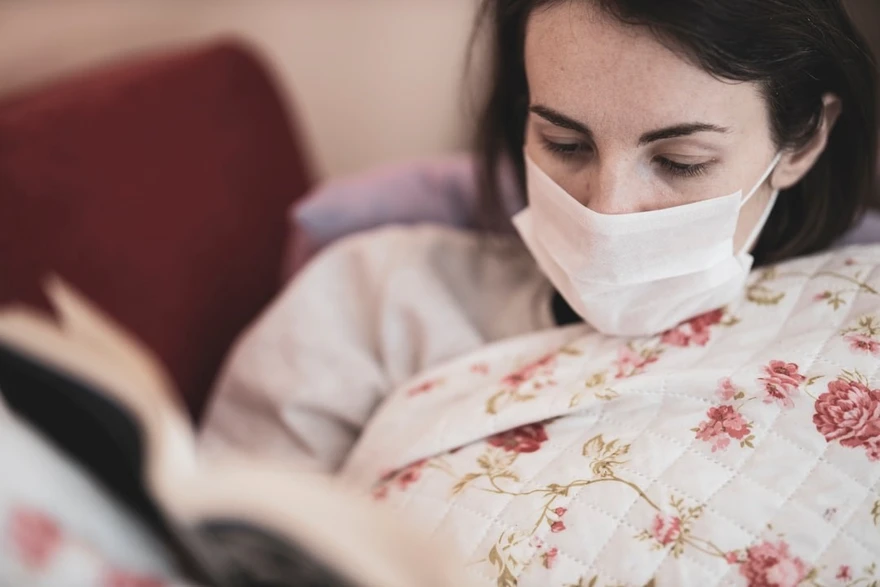

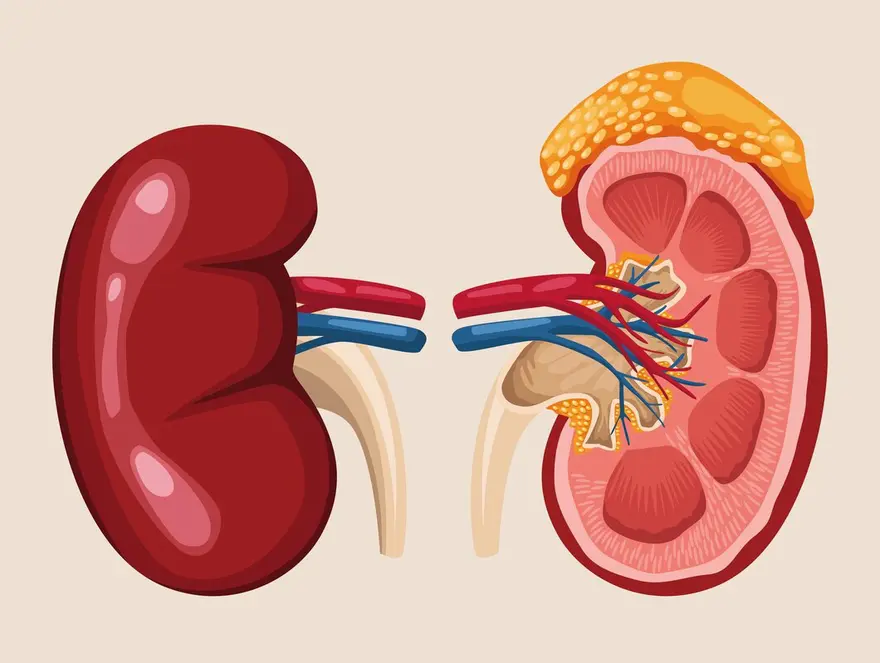
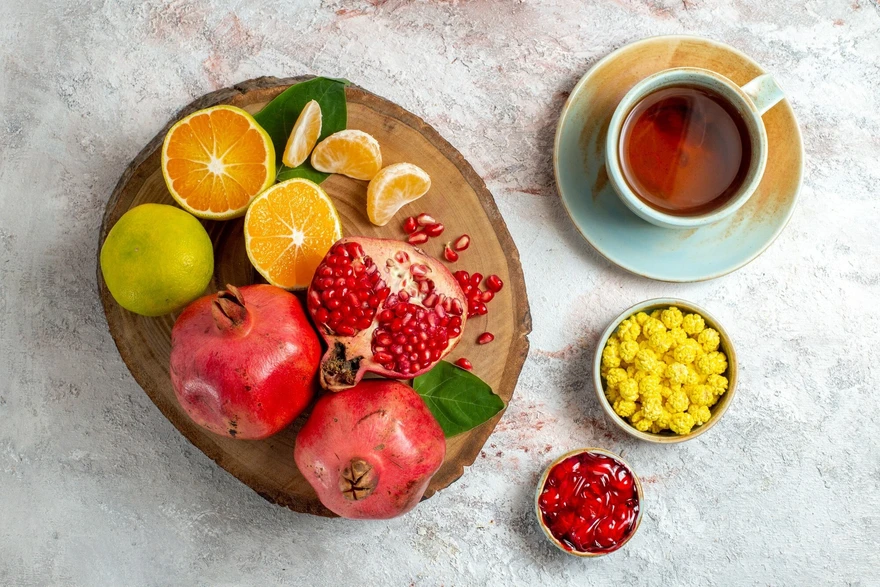
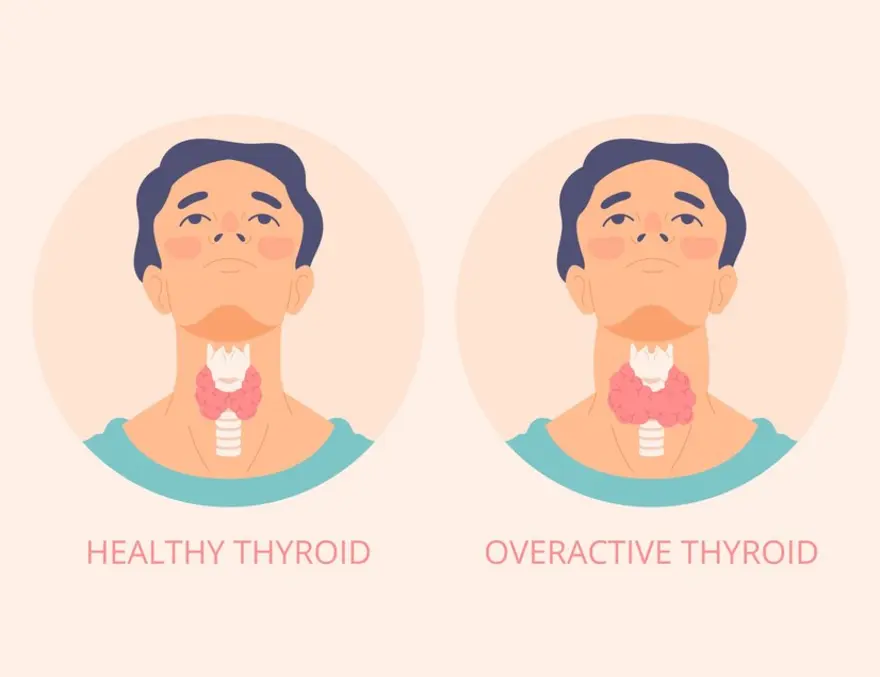
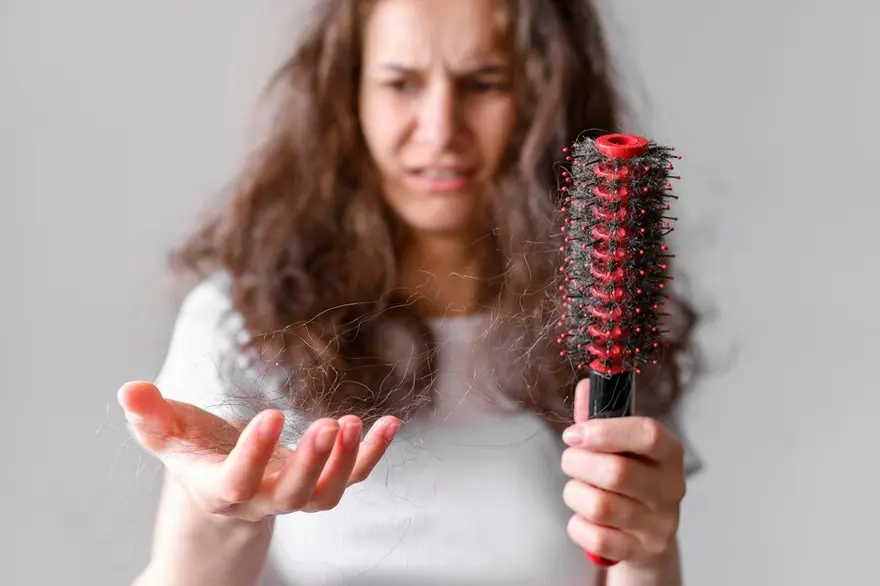

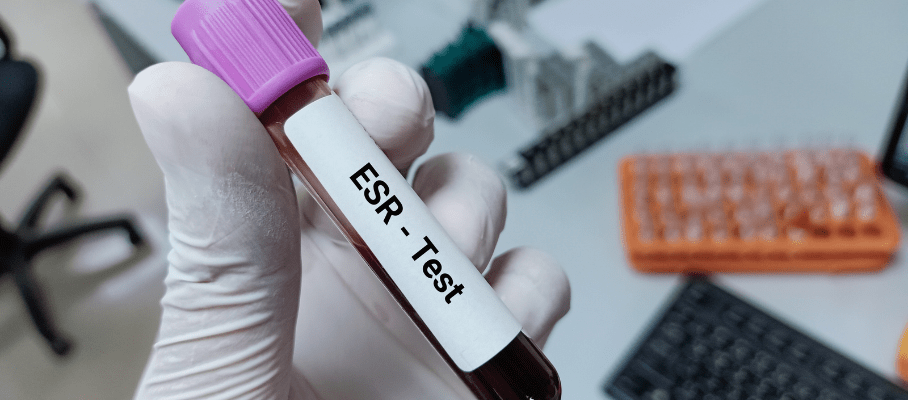

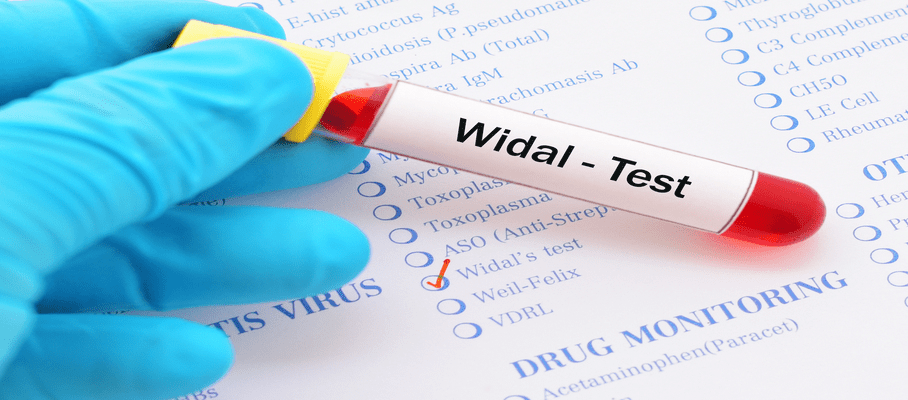

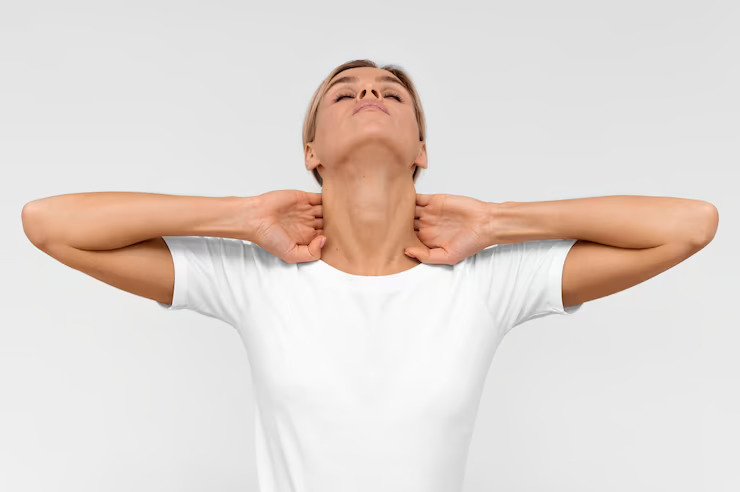


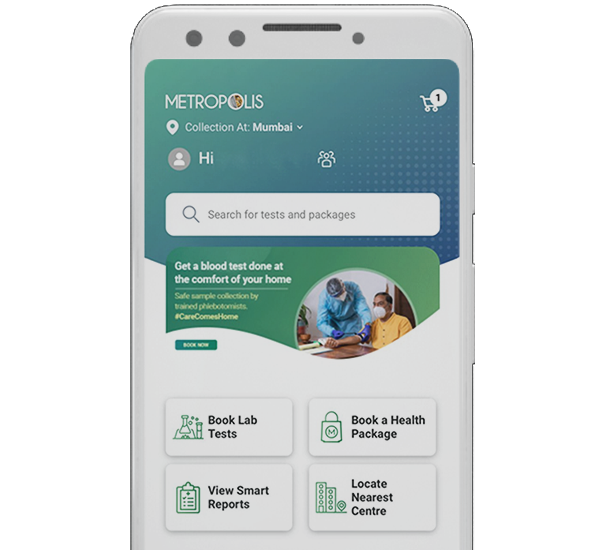
 WhatsApp
WhatsApp